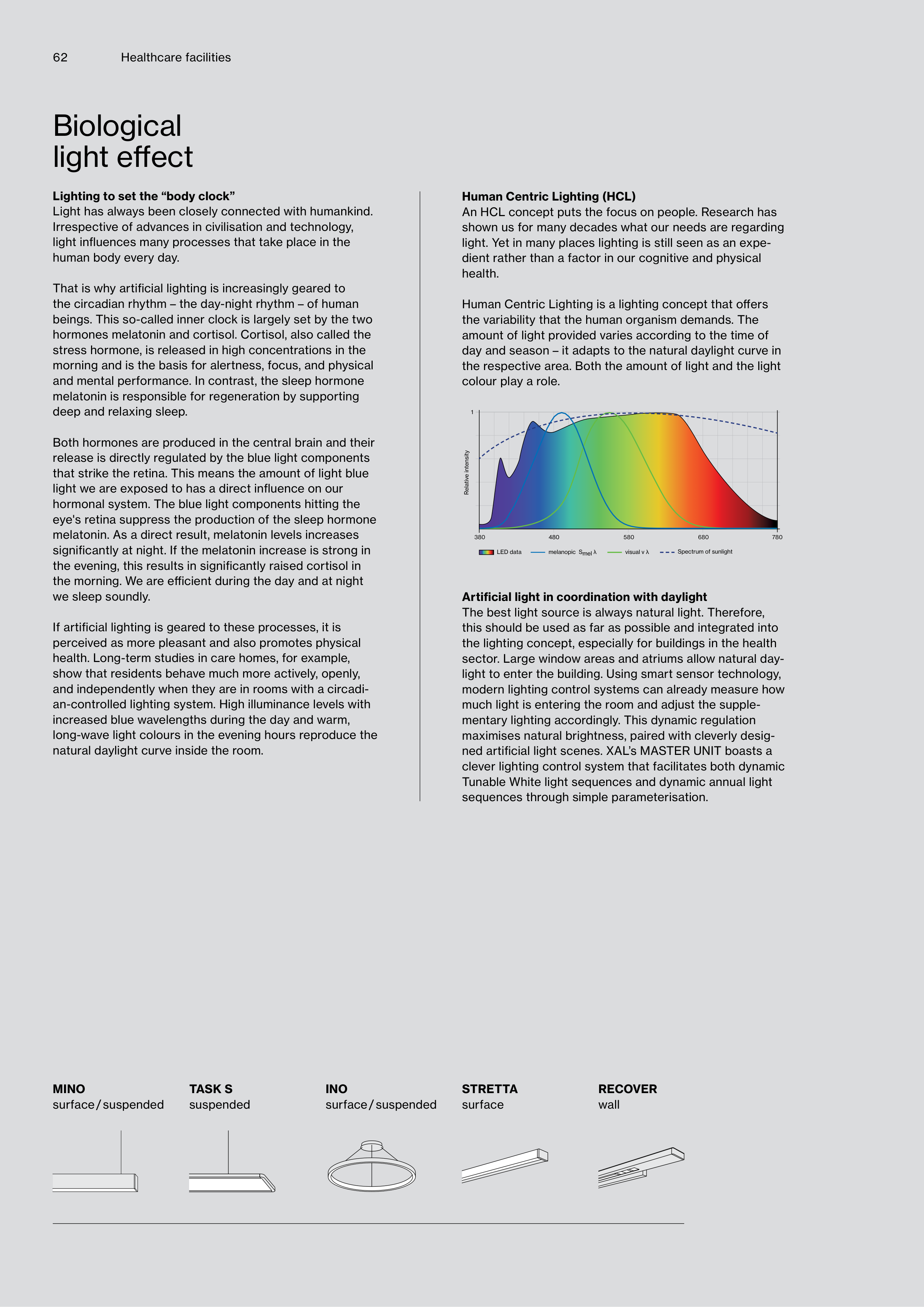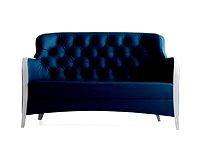RECOVER
INO
STRETTA
TASK S
MINO
wall
surface / suspended
surface
suspended
surface / suspended
Biological
light eff ect
Lighting to set the “body clock”
Light has always been closely connected with humankind.
Irrespective of advances in civilisation and technology,
light infl uences many processes that take place in the
human body every day.
That is why artifi cial lighting is increasingly geared to
the circadian rhythm – the day-night rhythm – of human
beings. This so-called inner clock is largely set by the two
hormones melatonin and cortisol. Cortisol, also called the
stress hormone, is released in high concentrations in the
morning and is the basis for alertness, focus, and physical
and mental performance. In contrast, the sleep hormone
melatonin is responsible for regeneration by supporting
deep and relaxing sleep.
Both hormones are produced in the central brain and their
release is directly regulated by the blue light components
that strike the retina. This means the amount of light blue
light we are exposed to has a direct infl uence on our
hormonal system. The blue light components hitting the
eye's retina suppress the production of the sleep hormone
melatonin. As a direct result, melatonin levels increases
signifi cantly at night. If the melatonin increase is strong in
the evening, this results in signifi cantly raised cortisol in
the morning. We are effi cient during the day and at night
we sleep soundly.
If artifi cial lighting is geared to these processes, it is
perceived as more pleasant and also promotes physical
health. Long-term studies in care homes, for example,
show that residents behave much more actively, openly,
and independently when they are in rooms with a circadi-
an-controlled lighting system. High illuminance levels with
increased blue wavelengths during the day and warm,
long-wave light colours in the evening hours reproduce the
natural daylight curve inside the room.
Human Centric Lighting (HCL)
An HCL concept puts the focus on people. Research has
shown us for many decades what our needs are regarding
light. Yet in many places lighting is still seen as an expe-
dient rather than a factor in our cognitive and physical
health.
Human Centric Lighting is a lighting concept that off ers
the variability that the human organism demands. The
amount of light provided varies according to the time of
day and season – it adapts to the natural daylight curve in
the respective area. Both the amount of light and the light
colour play a role.
Artifi cial light in coordination with daylight
The best light source is always natural light. Therefore,
this should be used as far as possible and integrated into
the lighting concept, especially for buildings in the health
sector. Large window areas and atriums allow natural day-
light to enter the building. Using smart sensor technology,
modern lighting control systems can already measure how
much light is entering the room and adjust the supple-
mentary lighting accordingly. This dynamic regulation
maximises natural brightness, paired with cleverly desig-
ned artifi cial light scenes. XAL’s MASTER UNIT boasts a
clever lighting control system that facilitates both dynamic
Tunable White light sequences and dynamic annual light
sequences through simple parameterisation.
LED data
380
780
680
580
380
1
780
480
Relative intensity
680
580
visual v λ
melanopic Smel λ
Spectrum of sunlight
62
Healthcare facilities





